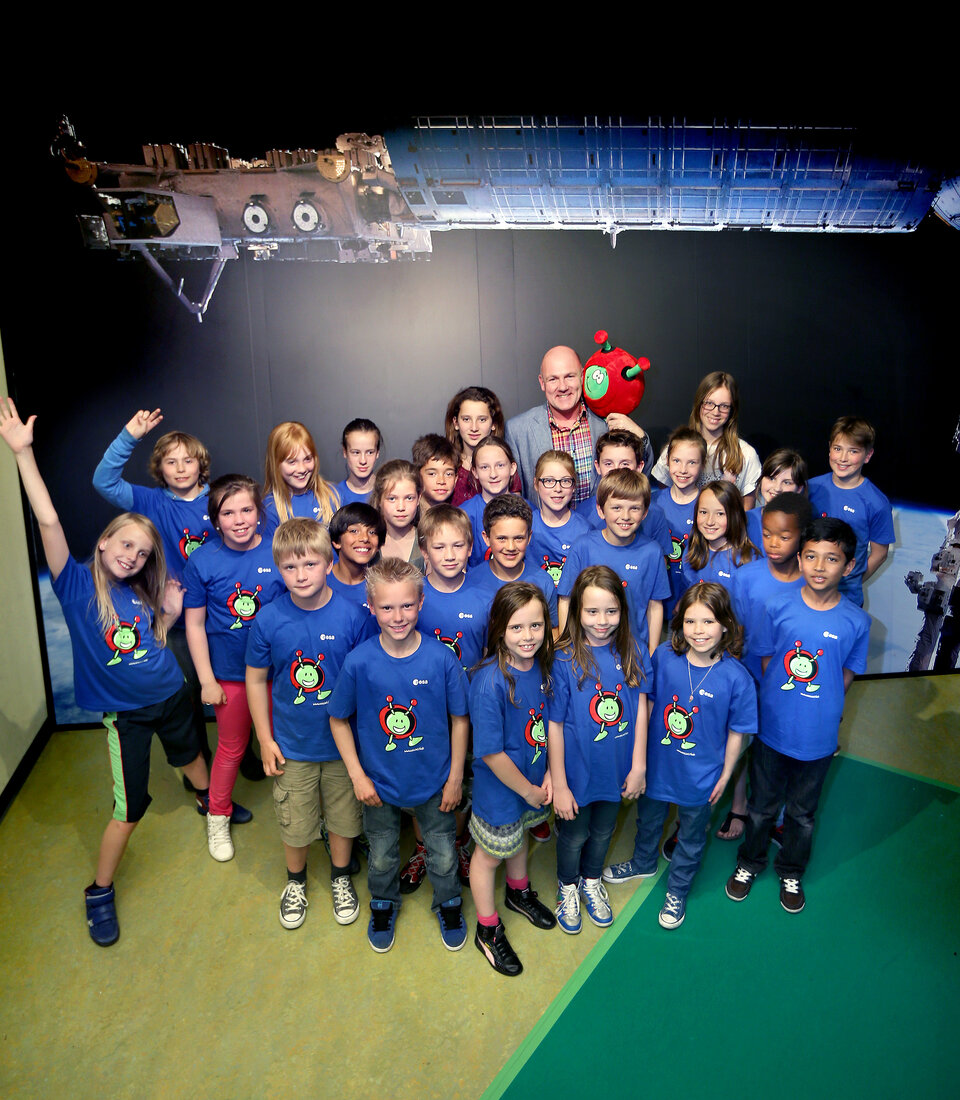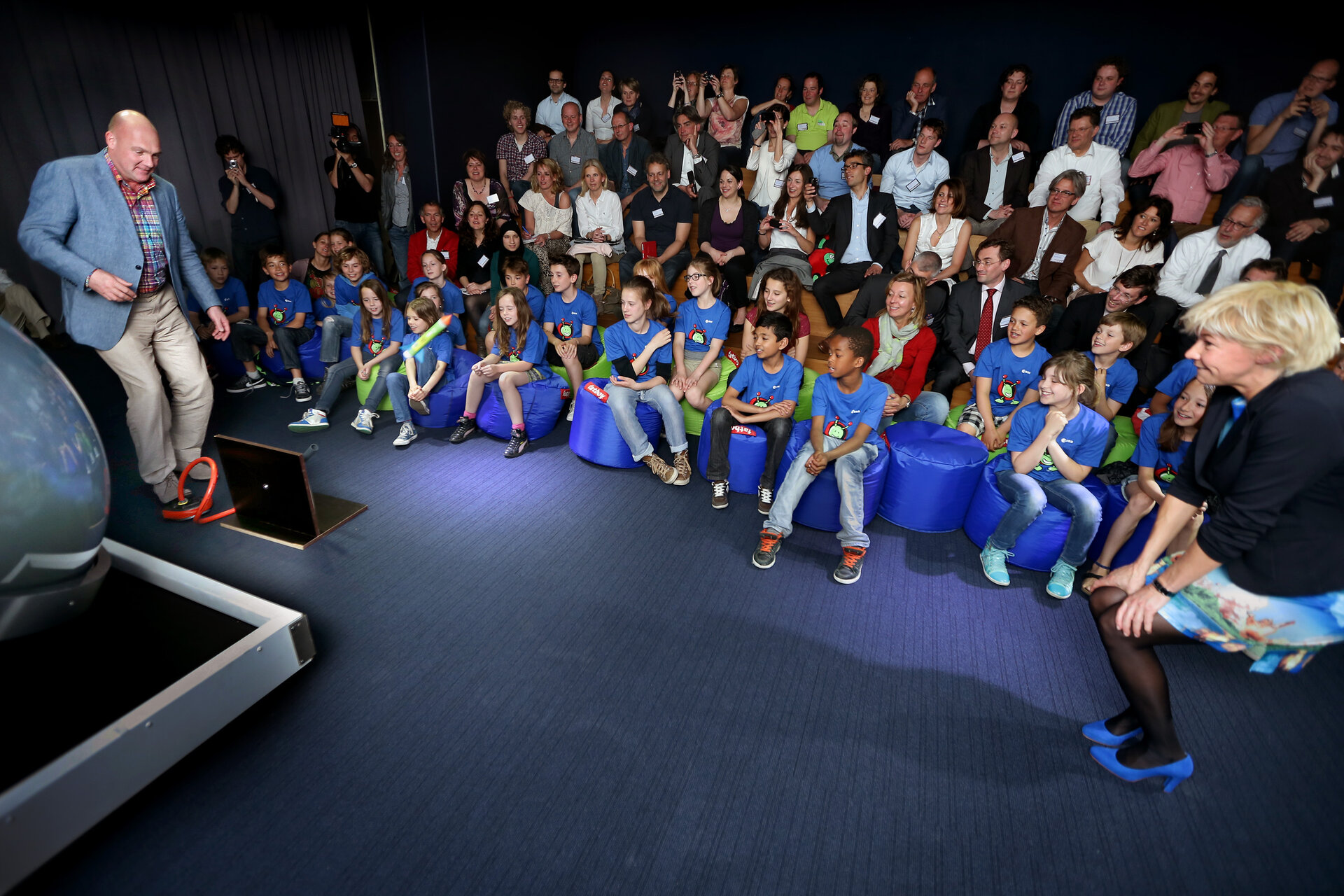ESA and Dutch Space Office join forces to bring space to schools
ESA and the Dutch Space Office (NSO) are now co-funders of the ESERO project in the Netherlands. This new 3-year collaboration is aimed at bringing space into the classroom. The Nemo Science Center, located in Amsterdam, remains the operator of the project in the country.
The collaboration was announced today at an event that took place at Nemo, and builds upon the success of ESA’s European Space Education Resource Office (ESERO) in the Netherlands, which was launched back in 2006. Since then, thousands of teachers and students have been trained by ESERO Netherlands, through Nemo, to use space as a tool to teach STEM (Science, Technology, Engineering and Mathematics) subjects in the classroom.
The first project to be launched by ESERO Netherlands through this new partnership is ‘Space in the Classroom’ (Ruimtevaart in de klas). In the next three years the project will provide teacher training, curriculum-matching classroom resources and inspirational events, demonstrating how space can be a powerful, pedagogically modern and engaging teaching and learning tool.

Kai-Uwe Schrogl, Head of ESA Policies Department, Ger Nieuwpoort, Director of NSO, and Michiel Buchel, Director General of the NEMO Science Center, represented their respective organisations at the event.
Children from the Montessori Steigereiland Elementary School in Amsterdam took part in the event and learned about the exciting experience of working in space from a special guest star - former ESA astronaut André Kuipers, an active and enthusiastic ambassador for the use of space in education.
“As managers of ESERO in the Netherlands, and through our direct experience at Nemo, we know of the inspirational power of space with kids,” said Michiel Buchel. “Space is part of our everyday lives, and it is multidisciplinary by its very nature - it touches physics, chemistry, engineering, computer sciences, environmental sciences, biology and medicine, in an appealing way. We are proud to have been entrusted by ESA and NSO to keep bringing space into the classroom.”
ESA, NSO and Nemo have already collaborated in the educational programme Spaceship Earth (Ruimteschip Aarde).

Why do ESA and NSO invest in Education?
“ESA collaborates with national education players to fulfill one of its mandates, which is to use the potential of space to increase the scientific literacy of pupils in sciences, and to encourage them to take up STEM-related studies and careers,” said Kai-Uwe Schrogl.
“Today’s children are growing in the scientific and technological era - the space era. They are the future adults that will run our society tomorrow, and that need to be equipped to meet their own future challenges. Helping them achieve this is a shared objective of ESA and NSO,” Schrogl added.
“As a national space agency, NSO knows the growing importance of space and satellite data for our own society, and of the opportunities it gives science and economy in our country,” said Ger Nieuwpoort.
“We know that, to maintain competitiveness and growth, we have to invest in human capital. Our objective is to follow youngsters from the classroom up to moment in which they will start up their own companies. ESERO Netherlands and the ‘Space in the classroom’ project represent an important investment in the young generation,” he added.
What’s ESERO?
ESERO is the largest ESA educational project to support the formal education of sciences (STEM) in European primary and secondary schools. By encouraging educational activities specifically tailored to the national curricula and priorities of ESA Member States, the ESERO offices play an important role in supporting science and technology education and inspire the next generation to pursue STEM-related studies and careers, particularly in the space domain.
So far ESA has established European Space Education Resource Offices (ESEROs) in eight of its Member States: Netherlands, Belgium, Norway, UK, Ireland, Sweden, Denmark and Finland.
In 2006, the ESERO Netherlands office, the first of its kind, was inaugurated at Nemo. Seven years and many achievements later, the project has reached a larger dimension and can still count on the support of Dutch public institutions – initially by the OCW Ministry and today through NSO.
Major successes from ESERO Netherlands include the ‘Space in 80 lessons’ teacher pack for primary level, the PromISSe/Mission X-Train like an astronaut project, and many others. The launch of new 40-lesson pack for secondary school teachers was also announced at the event.





